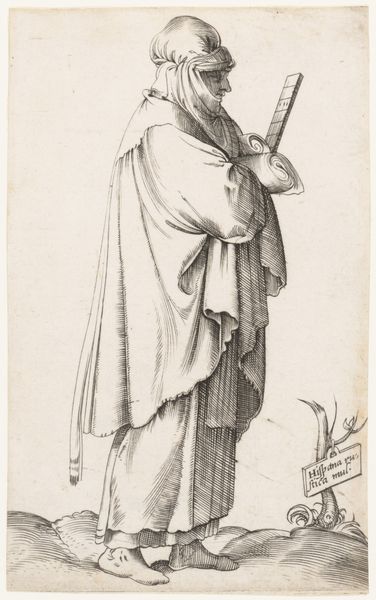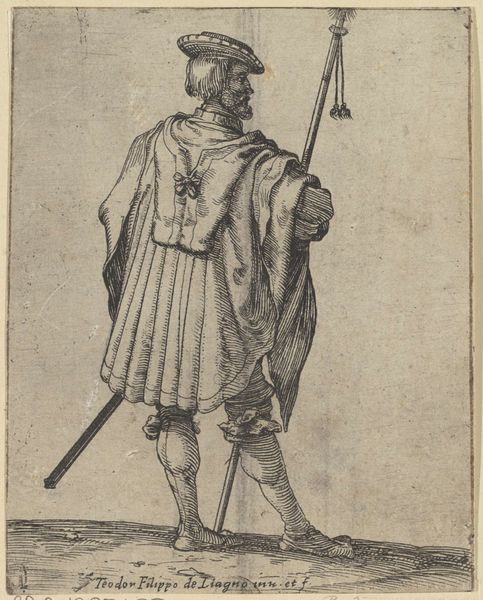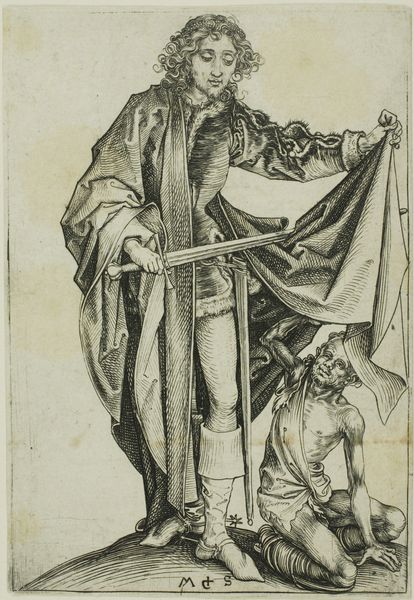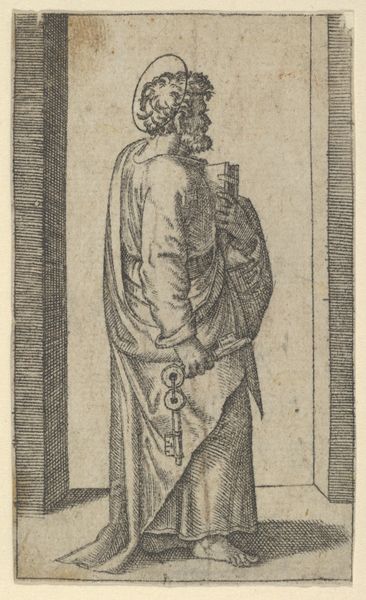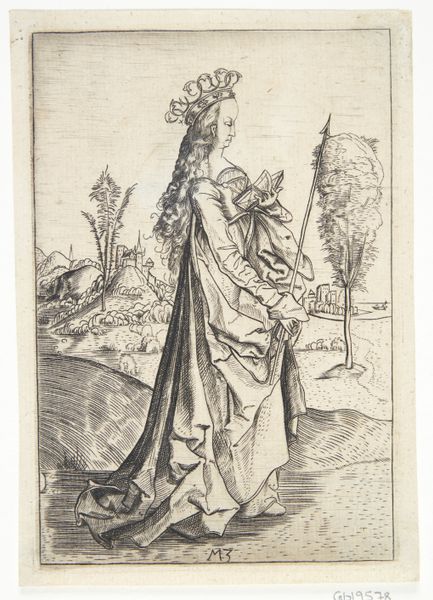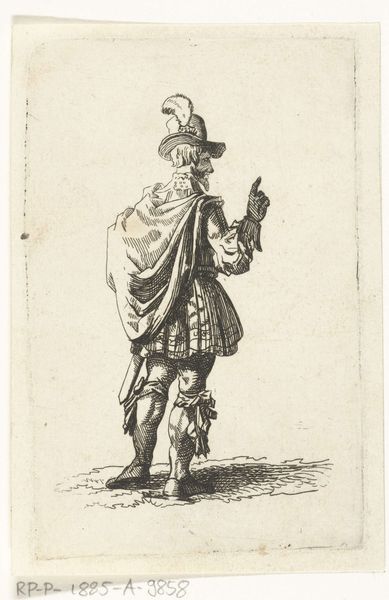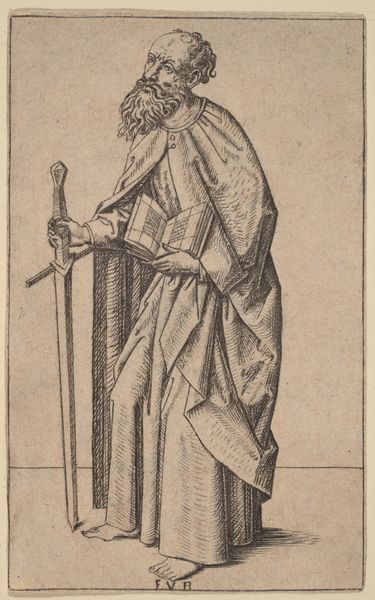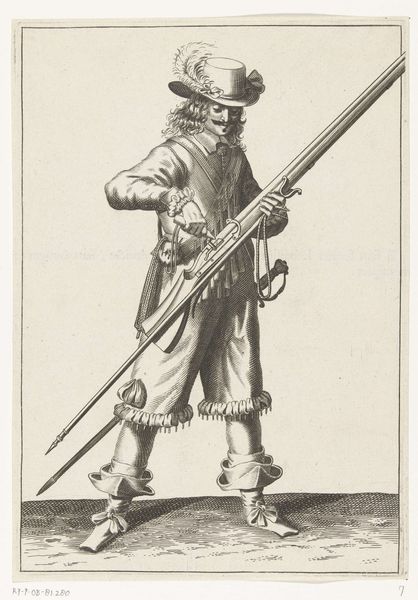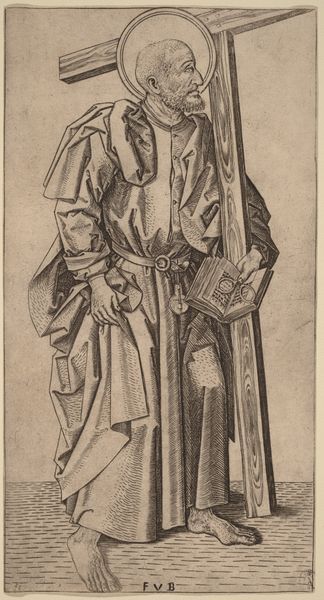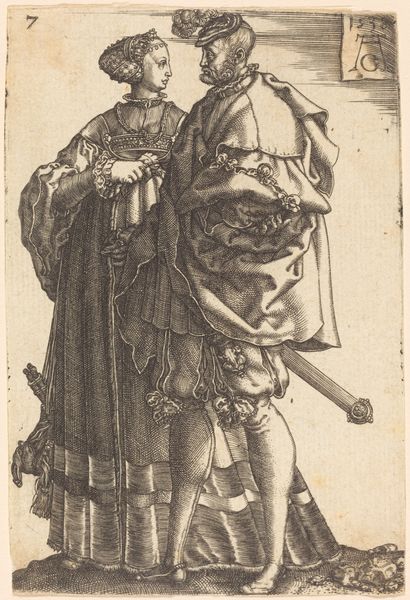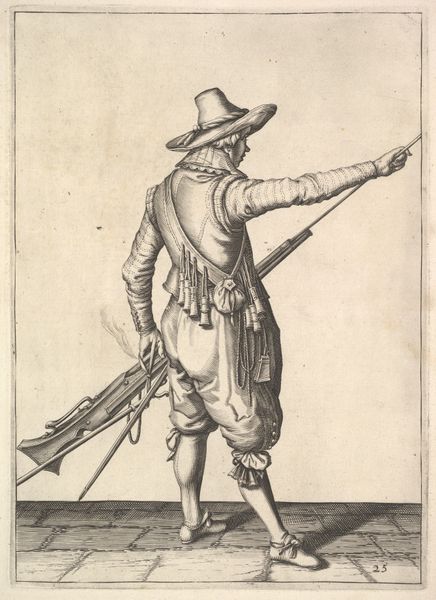
print, engraving
#
portrait
#
baroque
# print
#
figuration
#
france
#
line
#
history-painting
#
engraving
Dimensions: 6 5/8 x 4 in. (16.83 x 10.16 cm) (image, sheet)
Copyright: Public Domain
Curator: The linear precision of this engraving, "Kuslir Aga ou Chef des Eunuques noirs" from around 1650 and currently residing at the Minneapolis Institute of Art, immediately grabs the eye, doesn’t it? The meticulous hatching that describes volume... fascinating. Editor: It’s incredibly opulent; the textures of that fur trim and tall head wrap—almost sculptural. What can you tell us about how this print was made? Curator: Certainly. The French artist François Silvestre likely employed a burin, a specialized engraving tool, to incise these lines onto a copper plate. Note how line weight variance gives the illusion of shadow, thus, dimension. Consider the artisanal labor that went into its fabrication. Each furrow etched to describe rank and privilege, no less. Editor: Precisely, let's unpack that labor. These luxury textiles suggest the resources mobilized to represent imperial power—and by extension the economic conditions for the artwork's manufacture. Curator: Indeed. Observe the figure's carefully articulated garb, reflecting both his status and, frankly, a sense of the exotic from a European perspective. The line performs a social function here, shaping perceptions and possibly perpetuating stereotypes. Editor: The figure’s dark skin rendered through these delicate lines creates quite the contrast, prompting consideration of how this portrait both represents and potentially essentializes its subject through graphic means. Are we sure he made this from observation? Curator: Good point. He could've simply drawn after someone else's sketches made on site. Still, the way that line so precisely delineates his social bearing, a type of historical theatre, is arresting. Editor: Yes, this print prompts reflections on the global systems inherent in representation. By fixating on line, can we unpack its broader social implications and production networks? Curator: Perhaps. Even appreciating Silvestre's technique lets us see its role in mediating cultural exchange through both form and manufacture. Editor: Looking closely does reveal how intertwined form, labor, and society can become through an image. Curator: In viewing "Kuslir Aga," technique becomes intertwined with how and why images still resonate centuries later.
Comments
No comments
Be the first to comment and join the conversation on the ultimate creative platform.
